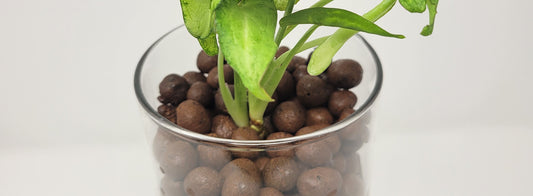Cloning plants may sound complicated, expensive, and like the plot of a bad sci-fi movie, but there’s a good chance you’ve done it or seen it without even knowing. Evidence of plant cloning dates back at least 2,000 years with very little change, except today we have the benefit of all those years of trial and error and scientific advancement.
Advantages of Cloning
Plant cloning gives you new plants that are identical to the original. For some, this is preferable over seeds, which may show traits of either parent plant. You get to skip the germination and seedling phases, meaning a shorter vegetative phase before flowering. For some plants, like seedless grapes, cloning is the only way to get more.
One drawback of cloning is the stress it can put on both the parent and clone plants. In plants like hemp, too much stress can lead to the production of male flowers. Any undesirable traits will also be a part of the new plant.
Can I Clone Any Plant?
Not all plants respond well to cloning. It’s best suited to fruiting plants, woody herbs, shrubs, vines, and trees. Your plant should be healthy, established, and have at least 6 nodes along the main stem before you attempt to clone it.
Cloning takes advantage of processes happening inside the plant during active growth. Usually, the best time to take clones is during the transition from vegetative to flowering phases, before it begins to put off flowers. Taking clones before the parent plant produces flowers allows the clone to put all its energy into growing new roots.
Getting Started
Before you start cutting, you’ll need to identify the nodes. Nodes are the places on a plant’s stem where new branches form, usually above a leaf. Any trimming, pruning, or cloning cuts should be made above a node.
For best results, start with a clean scalpel or shears. Clean your implements using 70-90% Isopropyl Alcohol between each cut. This keeps your plants and cuttings healthy by preventing bacteria, fungi, or other disease carriers from getting into the stems.

You’ll need to start with a 6-8 inch section, in the bottom half of the plant, with at least one node, preferably two. Identify the nearest node below this section, and make a diagonal cut just above it. Dip the cut end in cloning gel according to the package directions. From here you have a few options.
Water
One method is to place the cutting directly into a cup of water. Many houseplants have been rooted this way for years, but it can be a slower process.

Using a neoprene cloning collar, you can put the cutting into an aerated water system. The increased oxygen speeds up root production. In a deep water culture style system, the cutting is placed just above the water level, and the air bubbles created by the air stone splash water onto the stem. In an aeroponic cloner or cloning machine, a fine mist is sprayed onto the roots.
Coco Coir
Coconut coir comes from the outer husk of a coconut and creates a porous, soil-free media for growing. The structure allows adequate oxygen to reach the root zone, making it ideal for root growth. Ensure that your coco coir has been washed and buffered before use, and water thoroughly. Place the coco coir in a pot or propagation tray, and push the cutting’s stem in. Tamp down the coco and water lightly.
Soil
If you’re cloning directly into soil, you’ll need to make sure it has proper aeration. Coco coir, perlite, or vermiculite can all be added to increase drainage and aeration, if needed. Similar to coco coir, once you’ve placed your soil in pots or trays, push the cutting’s stem in and tamp the soil down then water lightly.
Rooting Plugs and Cubes
Rooting plugs can be made from many materials, including hemp, peat moss, floral foam, and rockwool. Many of them contain small amounts of nutrients and are ready to use right out of the package. Rockwool on the other hand, will need to be soaked in a solution of water and pH down before use. Directions will vary by material, but most will need to be watered first.
Aftercare
Place your clones under a grow light with 18-24 hours of blue/white light. It's normal for cuttings to be droopy for the first day or two, and they should perk up.
Not all cuttings will be successful, and some may take longer to root than others. Adding a microbial solution can help to reduce plant stress and speed up rooting, and foliar feeds provide additional nutrients before roots appear. Clones are usually ready to transplant to soil or hydro setups in about two weeks.
Want to learn more? We offer classes at venues around Atlanta! Visit the Taproot Hydroponics store, or find us on social media to get your questions answered!





